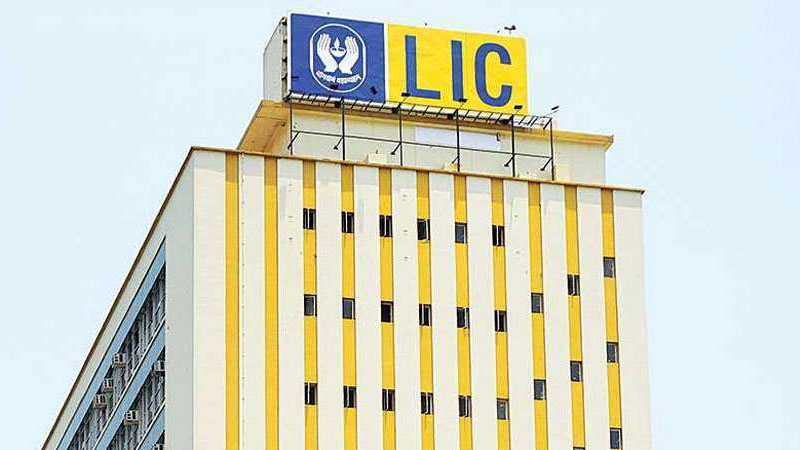The equity portfolio of insurer Life Insurance Corporation (LIC) has been hit by a margin of Rs. 57,000 crore. LIC is known for making large scale equity investments and has substantial holdings in many companies.

The value of its holdings has been reduced to Rs. 4.86 trillion from Rs. 5.43 trillion in the June quarter. This translated into a mark-to-market hit of more than Rs. 57,000 crore or 10.5 percent. This analysis has been reached after looking at the 336 listed companies, where LIC’s stake has been disclosed for the June quarter.
So far in this quarter, the market benchmark Sensex — which consists of 30 blue-chip stocks — has corrected 5.1 per cent. Meanwhile, broader market indices — BSE Midcap and BSE Smallcap — have corrected 7.7 per cent and 8.6 per cent, respectively.
The market sell-off was aggravated with foreign institutional investors (FIIs) selling Rs 31,870 crore worth of equities since the tax surcharge announcement in July. LIC is known for its ability to hold onto its investments for much longer periods and also for raising the bets when markets are weak.
G Chokkalingam, founder of Equinomics said, “PSU companies have been among biggest underperformers. Apart from the bluechips, sell-off in PSU banks and non-banking PSUs in mid-cap space must have put pressure on LIC’s investments”.
The BSE PSU Index is down 15 per cent during the quarter.
Analysts say that the PSU names have also been under pressure due to constant selling by the government to raise funds through its divestment drive.
According to the data, value of LIC’s stake in PSU names has declined by Rs 22,676 crore in the current quarter, which is 40 per cent of the overall erosion.
Analysts believe PSU bank mergers are also a cause of concern for the life insurer’s portfolio.
Analysts at JM Financial said in a note, “In the near-term, as these banks go through the merger process, a significant proportion of management and employee bandwidth is likely to get consumed and diverted away from growth and resolutions. There could be a drag on overall environment (these banks form 23 per cent of overall credit of the banking system.”
LIC holds stake in all the four PSU banks that have been shortlisted as banks that would be absorbing smaller banks as part of the mergers.
LIC held 7.3 per cent stake in Punjab National Bank as of June quarter. It held 9.2 per cent stake in Canara Bank, 6.4 per cent stake in Union Bank and 1.85 per cent stake in Indian Bank.
One reader in the Business Standard magazine responded to this development by saying, “The governments in the 21st century in India discovered a new way to finance their fiscal deficits, that is, using the Life Insurance Corporation of India (LIC) to invest, switch, buy, rescue and act as white knight with respect to the government’s ambitious disinvestment targets and saving IDBI Bank from going kaput. The funds available to the LIC are not ‘sovereign funds’ but hard earned savings of the people of India. Even sovereign funds like Temasek of Singapore do not conduct their financial dealings as unprofessionally and as irresponsibly as has been done by the LIC in the last couple of year”.
Although ‘LIC’ has become synonymous with ‘life insurance’, the people know very little about LIC as a business enterprise: How it does business and what the results are. LIC was the result of nationalisation and subsequent amalgamation of numerous life insurance companies in 1956. This nationalisation was sought to be justified by ‘policyholder interest’. As in bank nationalisation, the stated objective was a smokescreen to hide the government’s real intent which was to gain control over the enormous funds that insurers generate and thus enjoy unparalleled access to and control over the financial markets.
In 2017, LIC reported a premium income of Rs 300,000 crores. Its investment income alone was Rs 164,000 crores. It serviced 25 crore (250 million) policy-holders and 30 crore (300 million) policies. It employs lakhs of agents for whom selling insurance policies is the sole source of income.
In July, 2018 it decided that it will buy 30 percent of IDBI, a move that was sure to make use of ‘policyholders’ funds. It was not the government’s or LIC’s money to play poker with, even if it is a sure shot. The investment didn’t come out of what is called ‘shareholders funds’, or funds that belong to the ‘owners’ of the company, in this case the government.
LIC’s 254 page annual report for 2017 shows in excruciating details how they have been toeing the government line, but not how much ‘owners’ money is invested in it.
Many such similar moves have brought the company to where it is right now.
